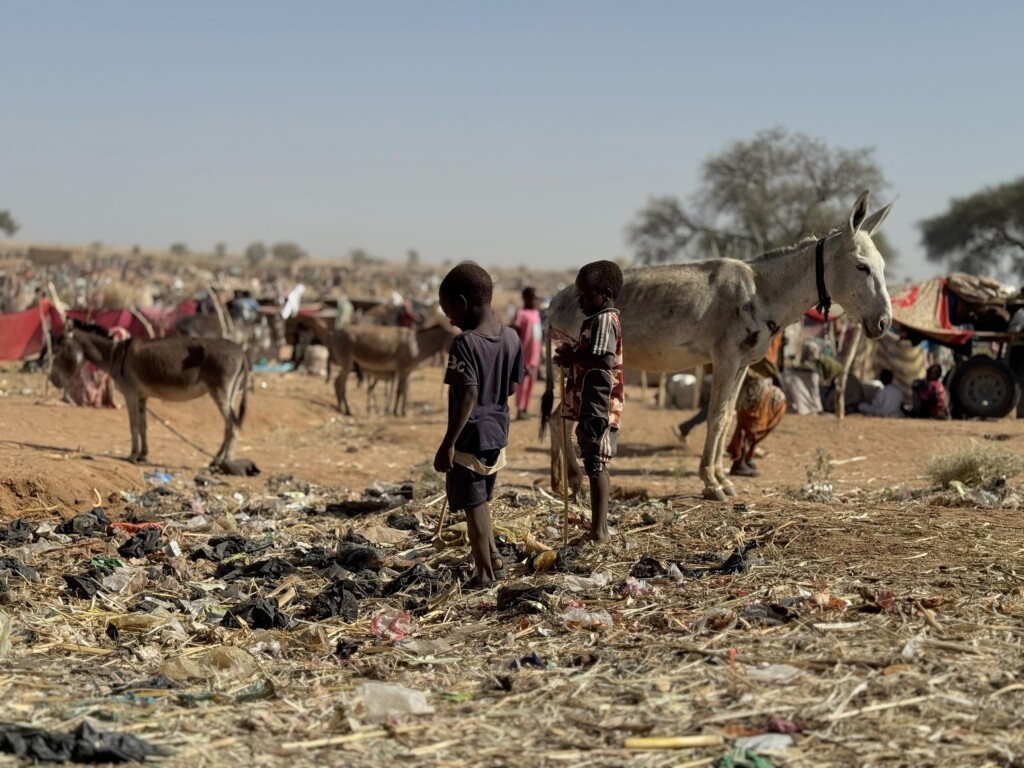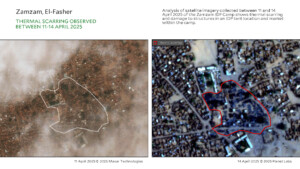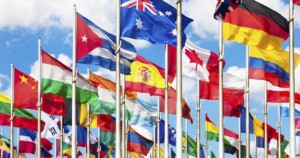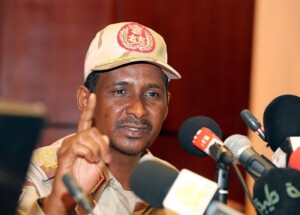Darfur catastrophe: Thousands displaced from El Fasher camps swell Tawila

Children fleeing with their families from Zamzam to Tawila are searching in a landfill: Photo: (Photo: Thomas van Linge / @ThomasVLinge)
The General Coordination of Displaced Persons and Refugees announced on Wednesday the arrival of almost 3,000 displaced people fleeing the North Darfur capital of El Fasher and its surrounding camps and countryside toward the area of Tawila, 50 kilometres to the west, over the last two weeks.
The United Nations reports of more than 500 dead talked about the fall of more than 500 people between dead and wounded, while about 400 thousand people fled about 80,000 families from Zamzam camp, most of whom arrived in Tawil and the city of El Fasher after an arduous journey during which they suffered hunger and thirst, while others spent on the road.
Satellite imagery
Meanwhile, satellite imagery showed the effects of fires and destruction caused by artillery shelling and Rapid Support Forces attacks, which began last Thursday, targeting the Zamzam and Abu Shouk camps in El Fasher. The images, taken between April 10 and 15, show plumes of smoke rising in different parts of the city due to artillery shelling and drone attacks. Commentators report that Zamzam camp itself has been ‘obliterated’.
In the context, the official spokesman for the coordination Adam Rijal told Radio Dabanga that the newly displaced people who arrived in Tawila came from El Fasher and the surrounding camps of Zamzam, Abu Shouk, and Abuja, in addition to Shaqra and um Hagalij, and other areas around El Fasher.
(Video: Coordination of Displaced Persons and Refugees)
Fleeing from Zamzam IDP and El Fasher countryside to Tawila area in North Darfur state : Video for the Coordination of IDPs and Refugees
He added that the scarcity of water and food has led to deaths as a result of thirst, hunger, disease and psychological trauma, describing the situation in Tawila as beyond the capacity of the residents of the region and existing organizations, explaining that elderly children and women live under the sun without shelter and we appeal to the United Nations, its agencies and humanitarian organizations to intervene urgently to save the displaced in Tawila.
400,000 displaced people flee Zamzam
The United Nations Office for the Coordination of Humanitarian Affairs (OCHA) said the Rapid Support Forces prevented young people from leaving the Zamzam camp, after 400,000 displaced people managed to escape.
“As of 15 April, access to Zamzam camp remains inaccessible, communications disruptions hamper efforts to verify the situation on the ground, and reports indicate that rapid support is preventing those remaining in the camp, especially young people, from leaving,” OCHA’s office said in a report OCHA’s office stated that those fleeing Zamzam were stripped of all their belongings, arriving at displacement sites with nothing, and are in dire need of food, shelter and supplies.

(Photo: Thomas van Linge / @ThomasVLinge)
Genocide
In addition, the “Peace of Sudan” women’s platform stressed that the current events in Darfur, especially in the Zamzam and Abu Shouk camps, are grave violations of international humanitarian law, and amount to genocide.
The platform, which includes more than 43 women’s organizations, criticized the silence of the international community and its failure to take decisive action to protect civilians and stop violations immediately, and called for the immediate lifting of the siege on El Fasher, and to ensure the unconditional and unhindered access of humanitarian and medical aid.
For its part, the Darfur Women’s Forum expressed its deep concern about the widespread violations against women and girls witnessed in the areas of Zamzam, Abu Shouk, Um Kadada and Tora, stressing the need to open safe humanitarian corridors and provide unhindered assistance to those affected.
In a statement on the occasion of the second anniversary of the outbreak of the war in Sudan, the Darfur Women’s Forum called for accountability for the perpetrators of crimes, an immediate and comprehensive ceasefire throughout the country, and the provision of urgent protection for civilians, especially women and children in conflict areas.
30 million people face famine
The International Organization for Migration (IOM) said in a statement that “more than 30 million people – two-thirds of Sudan’s population – are in dire need of humanitarian assistance, including 16 million children. Amy Pope, Director-IOM for Migration, said: “The war has pushed Sudan to the brink, families have been torn apart, and the hopes and aspirations of millions have been shattered in the face of famine, disease and the complete collapse of the economy. Borders and fragile situations in neighbouring countries such as South Sudan and Chad are at increased risk of regional instability, calling for the humanitarian response to be complemented by durable and sustainable solutions for returnees, refugees and host communities and governments.











 and then
and then